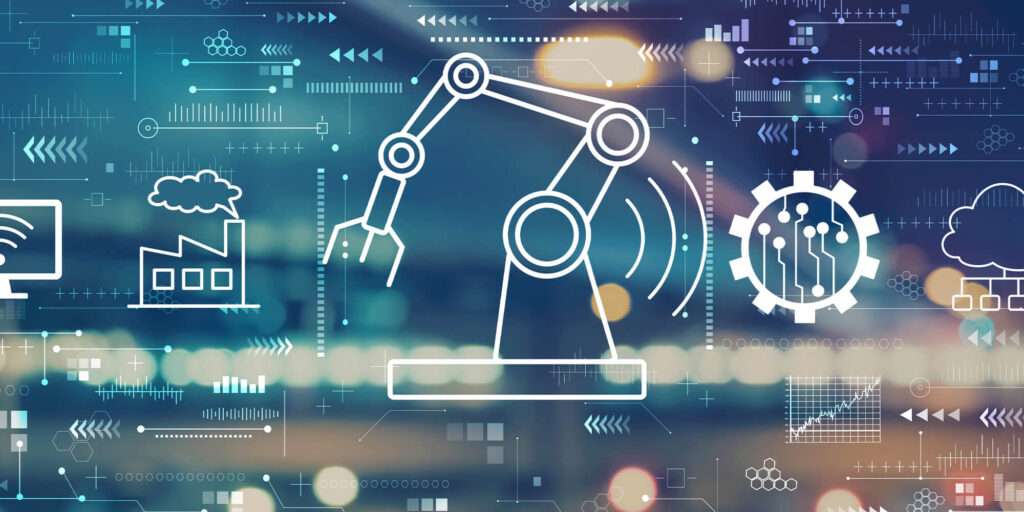Demystifying the Internet of Things (IoT): A Connected World Explained
The internet has revolutionized the way we communicate, access information, and conduct business. But its reach is expanding beyond computers and smartphones, weaving itself into the fabric of everyday objects. This interconnected network of physical devices, embedded with sensors and software, is what we call the Internet of Things (IoT).
In this blog, we’ll delve into the world of IoT, exploring its core concept, how it works, and the vast potential it holds for the future.
What is the Internet of Things (IoT)?
The Internet of Things (IoT) refers to the ever-growing network of physical devices – from smartwatches and thermostats to industrial machinery and self-driving cars – that are equipped with sensors, software, and other technologies to collect and exchange data over the internet. These devices can operate autonomously or interact with other connected devices, creating an intelligent ecosystem that gathers and utilizes real-time data to improve efficiency, automate tasks, and provide valuable insights.
Here are some key characteristics of IoT devices:
-
Sensors: IoT devices are equipped with various sensors, such as temperature sensors, motion detectors, and image recognition software, that allow them to gather data about their surroundings.
-
Connectivity: These devices connect to the internet through various protocols like Wi-Fi, Bluetooth, and cellular networks, enabling them to communicate and share data with other devices and systems.
-
Processing Power: While some devices have limited processing capabilities, others may have built-in microprocessors to analyze collected data and make basic decisions.
-
Software: IoT devices run on specialized software that allows them to communicate with other devices, manage data flow, and perform specific functions.
How Does IoT Work?
The workings of IoT can be broken down into four main stages:
-
Data Collection: IoT devices use their built-in sensors to gather data about their environment. This data can include temperature, humidity, pressure, movement, sound levels, and even visual information.
-
Data Transmission: The collected data is then transmitted to a central hub or the cloud through various communication protocols. This transmission can be real-time or batched depending on the device and application.
-
Data Processing: Once received, the data is processed and analyzed. This may involve filtering, aggregation, or applying machine learning algorithms to extract meaningful insights.
-
Action or Communication: Based on the processed data, the system can take pre-programmed actions. This might involve sending alerts, triggering automated tasks, or controlling other connected devices within the network.
Here’s a simplified example to illustrate how IoT works:
Imagine a smart thermostat in your home. It uses temperature sensors to monitor the room’s temperature. This data is then transmitted to a central hub (often a smartphone app) through Wi-Fi. The app analyzes the data and compares it to your pre-set preferences. If the temperature deviates from your desired range, the app can automatically adjust the thermostat settings to maintain a comfortable environment.
The Impact of IoT: Transforming Industries and Everyday Life
The potential applications of IoT are vast and ever-expanding. Here’s a glimpse into how IoT is transforming various sectors:
-
Smart Homes: IoT devices like smart thermostats, lighting systems, and connected appliances allow for remote control, energy management, and personalized home automation.
-
Smart Cities: Traffic management systems, connected parking solutions, and environmental monitoring sensors can optimize city infrastructure and resource utilization.
-
Wearable Technology: Fitness trackers, smartwatches, and health monitors provide real-time health insights and enable remote patient monitoring.
-
Industrial Automation: Connected machines in factories can monitor performance, predict maintenance needs, and optimize production processes.
-
Retail and Supply Chain Management: IoT sensors can track inventory levels, optimize logistics, and enhance customer experience with targeted promotions.
-
Agriculture: Smart irrigation systems, soil moisture sensors, and precision agriculture techniques can improve crop yields and resource utilization.
Benefits of IoT:
-
Increased Efficiency: Automated tasks, real-time data analysis, and resource optimization lead to significant efficiency gains across various industries.
-
Improved Decision Making: Data-driven insights from connected devices empower better decision-making processes for businesses and individuals.
-
Enhanced Convenience: IoT applications automate tasks and provide remote control capabilities, simplifying daily routines and improving user experience.
-
Cost Reduction: Optimized processes, preventive maintenance, and resource management lead to cost savings across various sectors.
-
New Products and Services: The continuous development of IoT solutions fosters innovation, paving the way for new products and services that cater to evolving user needs.
The Future of IoT: A Connected World of Possibilities
The future of the Internet of Things (IoT) is brimming with possibilities, weaving a web of interconnected devices that will fundamentally alter our lives. Imagine a world where your home anticipates your needs, automatically adjusting the temperature or lighting. Cities could optimize traffic flow based on real-time data, while industries streamline processes with intelligent automation. As technology like 5G fuels faster communication and AI refines data analysis, IoT’s potential to create a smarter, more efficient world becomes boundless. However, this connected future hinges on robust security measures and equitable access for all.
